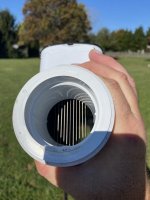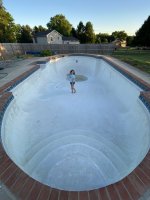- Aug 20, 2020
- 7,786
- Pool Size
- 27000
- Surface
- Plaster
- Chlorine
- Salt Water Generator
- SWG Type
- CircuPool RJ-60
I’m curious h
I’m curious how hard it would be to replaster it myself in basic white plaster. I’ve done some concrete, drywall, and stucco work so not totally unfamiliar with it but if there is really some expertise in mixing it to avoid early failures like this it makes me hesitant until I understood what those issues are.I have similar plaster particles in my robot bag as well but my plaster is 20 years old now. Yours should not be failing at 3 years. Now I’m scared to replaster.





